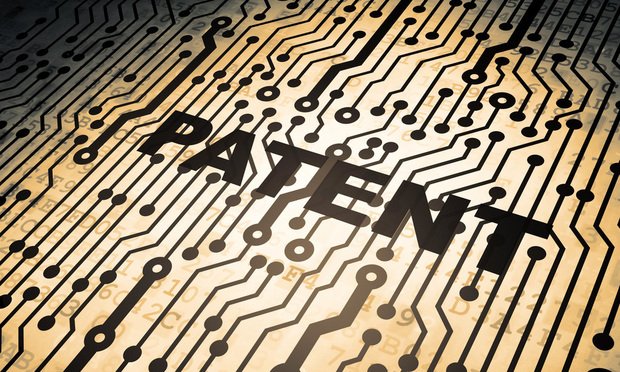Features

New U.S.-China Investment Dynamic Focuses On AI and Sensitive Technologies
An Executive Order released by the Biden Administration on Aug. 9 places increased importance on due diligence when investing in specific foreign countries. The Executive Order will regulate outbound investments in China with a focus on key technologies critical to safeguarding U.S. national security, including artificial intelligence.
Features

A Diverse Patent Portfolio Better Protects Artificial Intelligence Inventions
Takeaways from 'IBM v. Zillow' from a Patent Drafting Perspective Part Two of a Two-Part Article In Part One of this article we discussed the IBM v. Zillow case, where IBM sued Zillow for infringing on seven IBM's patents directed to artificial intelligence (AI) algorithms for estimating property value. The focus was on the difficulties in establishing patent infringement on specific AI algorithms, as well as the strategic advantages of including additional patent claims that target ancillary features of an AI system. In this segment, we analyze the claims made in the Zillow case and present some tips for drafting AI-related claims from the perspective of patent infringement.
Features

The Impact of the Supreme Court's Goldsmith Decision on Copyright Enforcement Against AI Tools
The U.S. Supreme Court's opinion in Andy Warhol Foundation for the Visual Arts, Inc. v. Goldsmith sent ripples through the legal and artistic communities. Months later, legal scholars and art journalists continue to debate whether the decision opens the door for federal courts to act as "art critics." Many, however, downplay how the Supreme Court's decision impacts the ways in which copyright owners may enforce their rights against generative AI tools.
Features

AI and Law Practice: A Roadmap for Success In Modern Legal Firms
This article lays out a general roadmap for success in modern legal firms through the strategic incorporation of AI technologies.
Features

Legal Marketers and Business Developers Are Bullish On AI
As buzz around artificial intelligence continues to grow, law firm leaders are by and large taking a cautious approach. But when it comes to the marketing and business side of the legal industry, leaders are bullish about the prospects of AI assisting their overworked teams, with many actively exploring possible applications, if not using them already.
Features

A Diverse Patent Portfolio Better Protects Artificial Intelligence Inventions
Takeaways from 'IBM v. Zillow' from A Patent Drafting Perspective Part One of a Two-Part Article This two-part article sheds light on several important aspects of patents on AI technology. In Part One, we provide a general overview of the IBM v. Zillow lawsuit and discuss strategies to diversify patent portfolios to maximize protection on AI-related technology.
Features

The Intersection of Generative AI and Copyright Law
Whether prompted to write a corporate slogan, create music, generate works of art and advertisements, or summarize a book — GAI can do it all. However, its increasing popularity means that users of GAI programs face substantial intellectual property risks — particularly when businesses use GAI for marketing and other public-facing purposes.
Features

More Lawsuits Enter AI/Content Creators War
The litigation warfront over the use of entertainment content in artificial intelligence software is rapidly escalating.
Features

Insurance Issues In AI-Related Risks
Most entertainment industry organizations have by now heard the warning bells of risks that come with the use of artificial intelligence technology, from data privacy and cybersecurity threats to potential copyright infringement and discrimination claims. In face of the recent spike in AI-related litigation, such risks could soon prove costly, leaving one last barrier of defense for entertainment companies that use AI: insurance.
Features

AI-Generated Content, Deepfakes and New Data Push the Limits of Civil Procedure
How will traditional tools and techniques need to adapt to handle new data challenges that have never been encountered by digital forensics specialists or lawyers?
Need Help?
- Prefer an IP authenticated environment? Request a transition or call 800-756-8993.
- Need other assistance? email Customer Service or call 1-877-256-2472.
MOST POPULAR STORIES
- The 'Sophisticated Insured' DefenseA majority of courts consider the <i>contra proferentem</i> doctrine to be a pillar of insurance law. The doctrine requires ambiguous terms in an insurance policy to be construed against the insurer and in favor of coverage for the insured. A prominent rationale behind the doctrine is that insurance policies are usually standard-form contracts drafted entirely by insurers.Read More ›
- A Lawyer's System for Active ReadingActive reading comprises many daily tasks lawyers engage in, including highlighting, annotating, note taking, comparing and searching texts. It demands more than flipping or turning pages.Read More ›
- The Brave New World of Cybersecurity Due Diligence in Mergers and Acquisitions: Pitfalls and OpportunitiesLike poorly-behaved school children, new technologies and intellectual property (IP) are increasingly disrupting the M&A establishment. Cybersecurity has become the latest disruptive newcomer to the M&A party.Read More ›
- Abandoned and Unused Cables: A Hidden Liability Under the 2002 National Electric CodeIn an effort to minimize the release of toxic gasses from cables in the event of fire, the 2002 version of the National Electric Code ("NEC"), promulgated by the National Fire Protection Association, sets forth new guidelines requiring that abandoned cables must be removed from buildings unless they are located in metal raceways or tagged "For Future Use." While the NEC is not, in itself, binding law, most jurisdictions in the United States adopt the NEC by reference in their state or local building and fire codes. Thus, noncompliance with the recent NEC guidelines will likely mean that a building is in violation of a building or fire code. If so, the building owner may also be in breach of agreements with tenants and lenders and may be jeopardizing its fire insurance coverage. Even in jurisdictions where the 2002 NEC has not been adopted, it may be argued that the guidelines represent the standard of reasonable care and could result in tort liability for the landlord if toxic gasses from abandoned cables are emitted in a fire. With these potential liabilities in mind, this article discusses: 1) how to address the abandoned wires and cables currently located within the risers, ceilings and other areas of properties, and 2) additional considerations in the placement and removal of telecommunications cables going forward.Read More ›
- Guidance on Distributions As 'Disbursements' and U.S. Trustee FeesIn a recent case from the Bankruptcy Court for the District of Delaware, In re Paragon Offshore PLC, the bankruptcy court provided guidance on whether a post-plan effective date litigation trust's distributions constituted disbursements subject to the U.S. Trustee fee "tax."Read More ›
